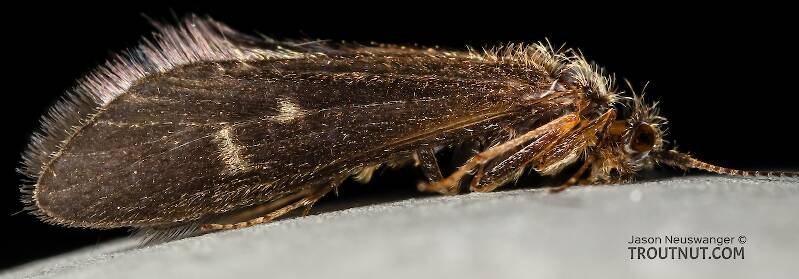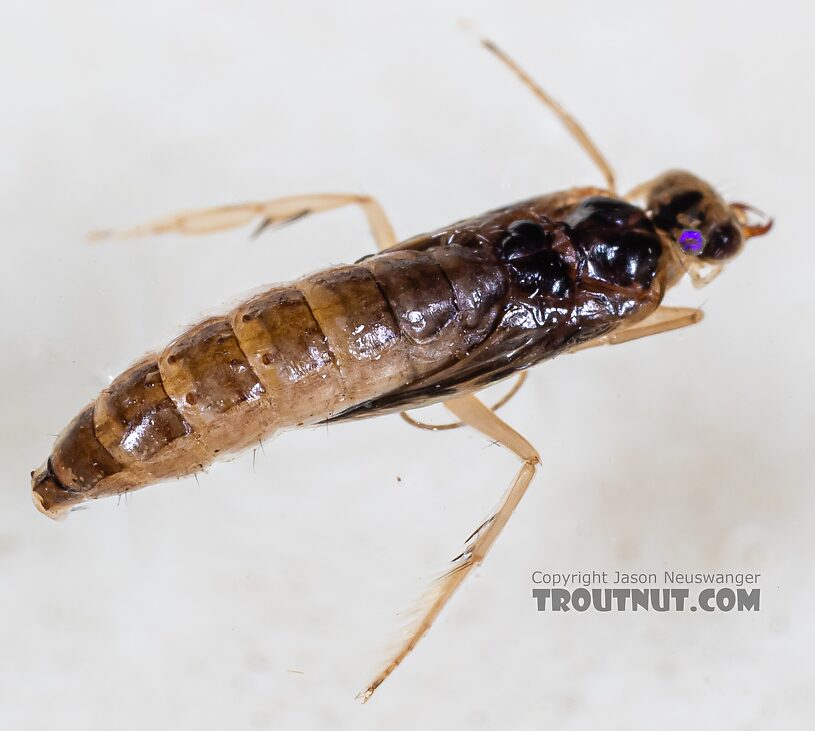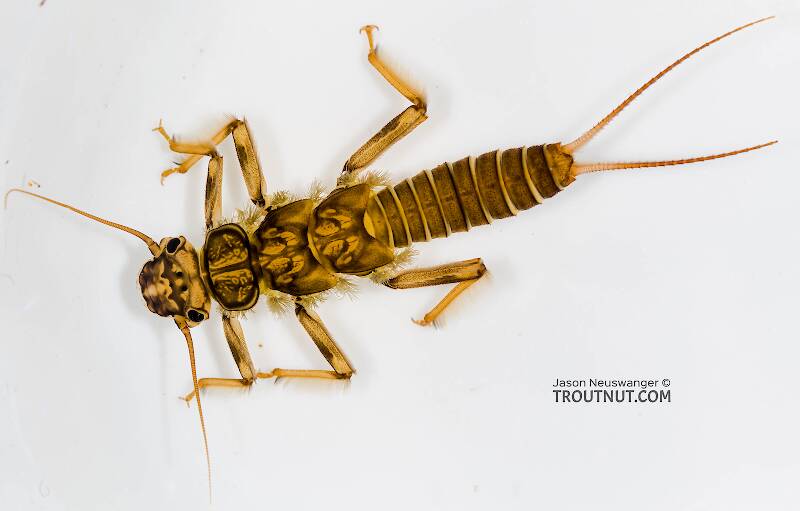
Hex Mayflies
Hexagenia limbata
The famous nocturnal Hex hatch of the Midwest (and a few other lucky locations) stirs to the surface mythically large brown trout that only touch streamers for the rest of the year.
Featured on the forum

Troutnut is a project started in 2003 by salmonid ecologist Jason "Troutnut" Neuswanger to help anglers and
fly tyers unabashedly embrace the entomological side of the sport. Learn more about Troutnut or
support the project for an enhanced experience here.
Speckled Peters
This common name refers to only one genus. Click its scientific name to learn more.
Caddisfly Genus Helicopsyche
These are often called Speckled Peters.
See Helicopsyche borealis for details. It is the only important trout stream species in this genus.

This one keys pretty easily to the Helicopsychidae family, of which there is only one genus in North America, and one species reported in this general area.

I'm calling this one very tentatively Helicopsyche borealis, with some big caveats that I might be wrong.
It seems to key fairly easily to Helicopsychidae, except at the last couplet in Merritt & Cummins (5th ed) it's supposed to have “anal processes short and straight, each with several mesal setae and 2 long apical setae,” whereas this one has VERY short, straight processes with 3 long apical setae and no mesal ones.
Additionally, the only species of Helicopsychidae documented in this region is Helicopsyche borealis, which is supposed to emerge much later in the summer.
It seems to key fairly easily to Helicopsychidae, except at the last couplet in Merritt & Cummins (5th ed) it's supposed to have “anal processes short and straight, each with several mesal setae and 2 long apical setae,” whereas this one has VERY short, straight processes with 3 long apical setae and no mesal ones.
Additionally, the only species of Helicopsychidae documented in this region is Helicopsyche borealis, which is supposed to emerge much later in the summer.


